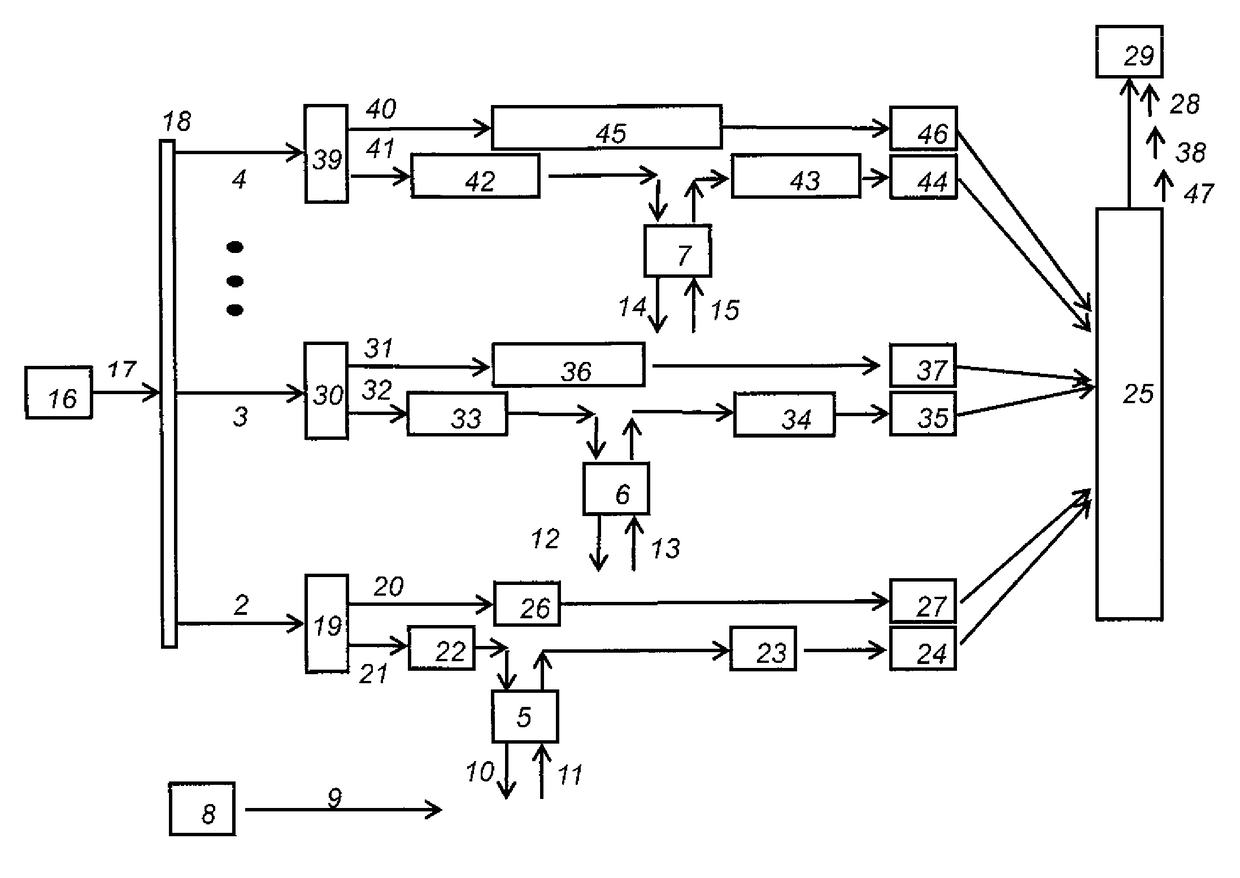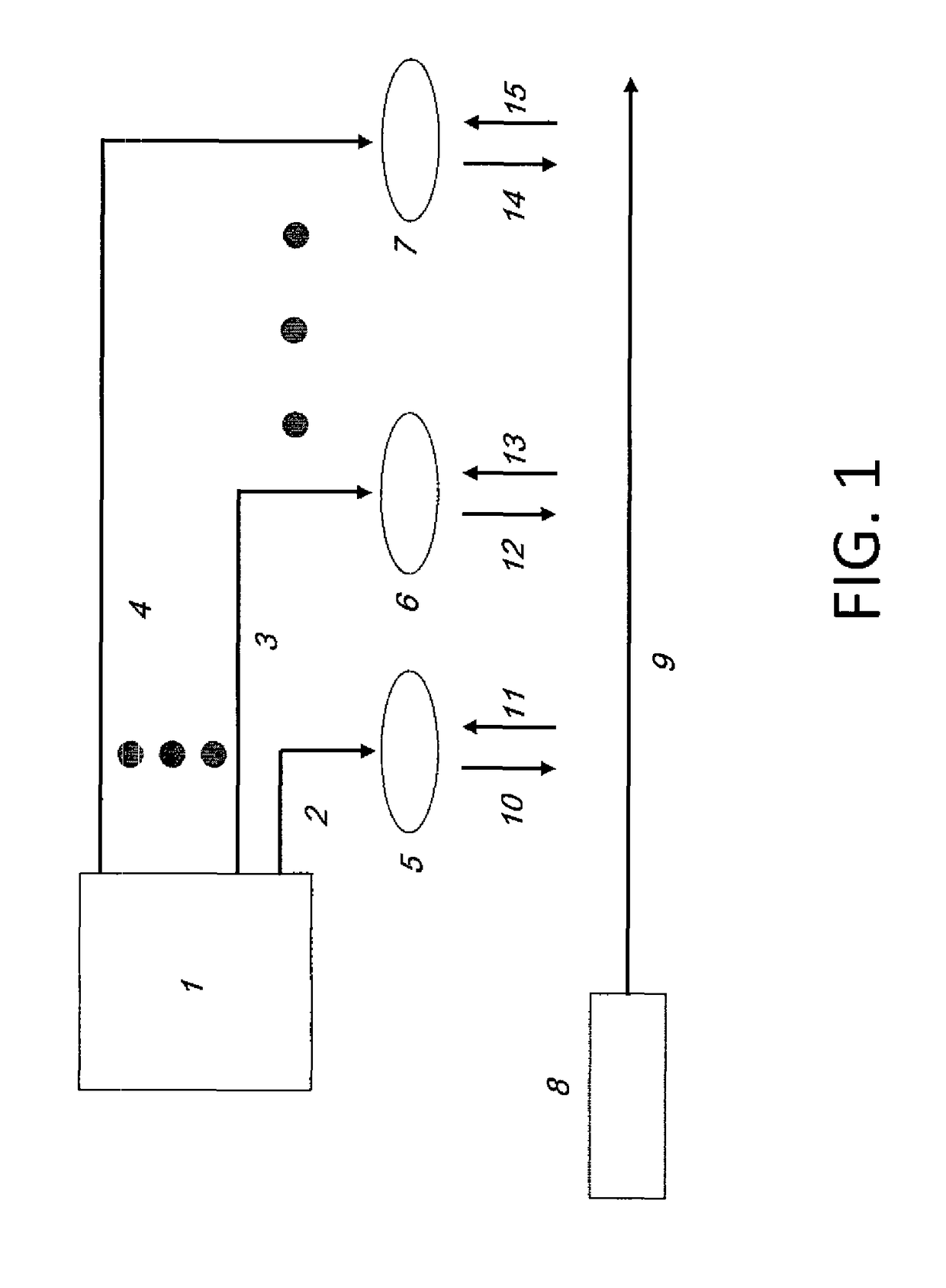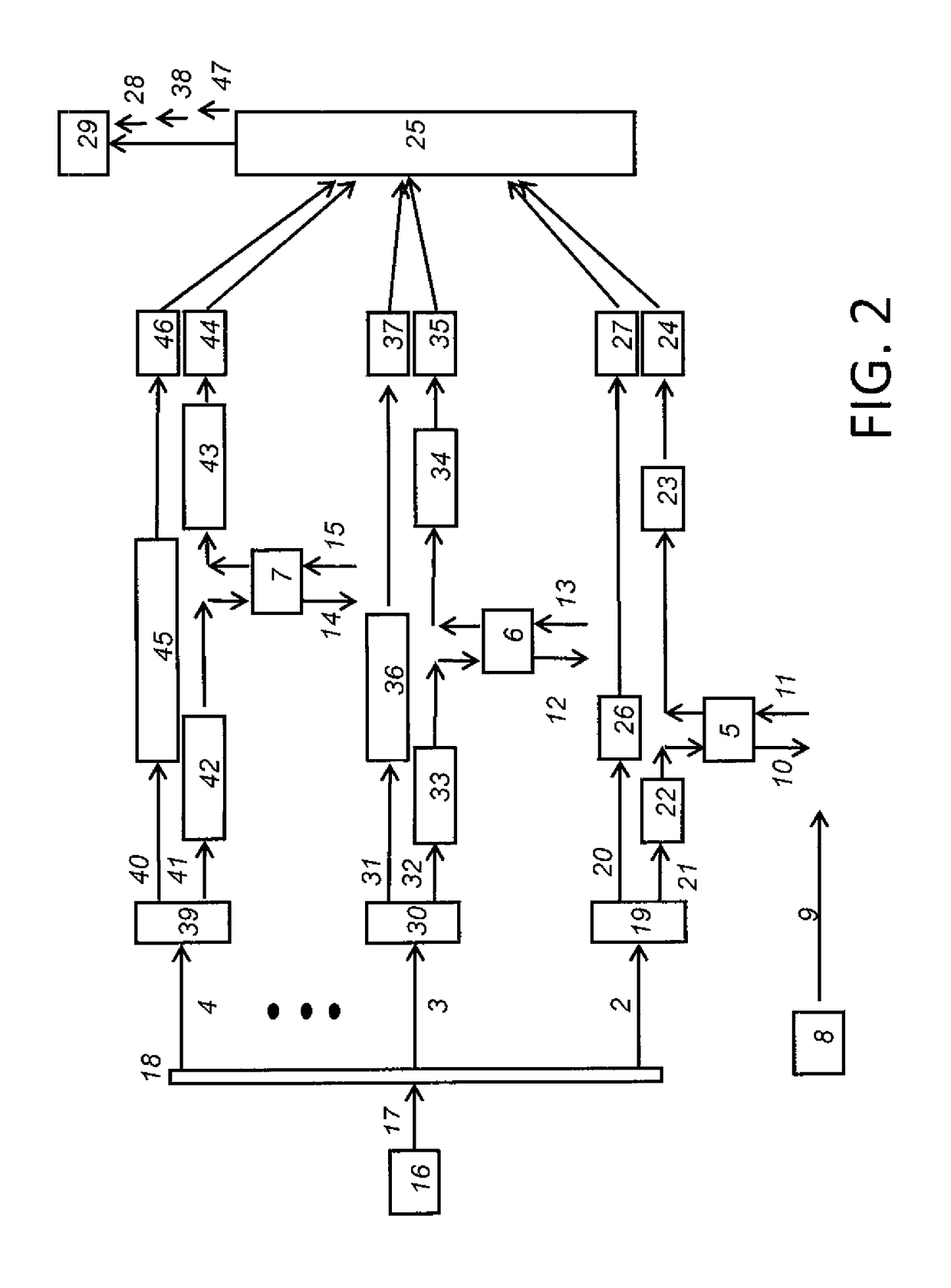Apparatus and method for improving detection precision in laser vibrometric studies
a technology of vibrometric studies and instruments, applied in the field of measurement, can solve the problems of affecting the detection accuracy of laser vibrometric studies, so as to improve the accuracy of collecting data and improve the accuracy of vibratory characteristic data
- Summary
- Abstract
- Description
- Claims
- Application Information
AI Technical Summary
Benefits of technology
Problems solved by technology
Method used
Image
Examples
Embodiment Construction
[0031]The present invention relates to the detection and measurement of the vibratory characteristics of an object, in particular the vibratory characteristics of a moving object. A laser vibrometer comprises multiple channels of light beam transmission and collection resulting in a higher signal to noise ratio for the collected data. Each of the multiple channels are temporally different, sequential and non-overlapping. Further, the channels are spatially located in relation to the application they are employed in to maximize the coverage of the vibrometer.
[0032]Due to the improved signal to noise ratio (SNR) and speckle tolerant operation, the laser vibrometer is particularly suited to accurately determine the vibratory characteristics of moving objects. When conducting remote and non-contact measurements on objects moving relative to the observation base and / or instrumentation, only finite time periods of observation are available to the instrument and observer. These finite and ...
PUM
 Login to View More
Login to View More Abstract
Description
Claims
Application Information
 Login to View More
Login to View More - R&D
- Intellectual Property
- Life Sciences
- Materials
- Tech Scout
- Unparalleled Data Quality
- Higher Quality Content
- 60% Fewer Hallucinations
Browse by: Latest US Patents, China's latest patents, Technical Efficacy Thesaurus, Application Domain, Technology Topic, Popular Technical Reports.
© 2025 PatSnap. All rights reserved.Legal|Privacy policy|Modern Slavery Act Transparency Statement|Sitemap|About US| Contact US: help@patsnap.com



